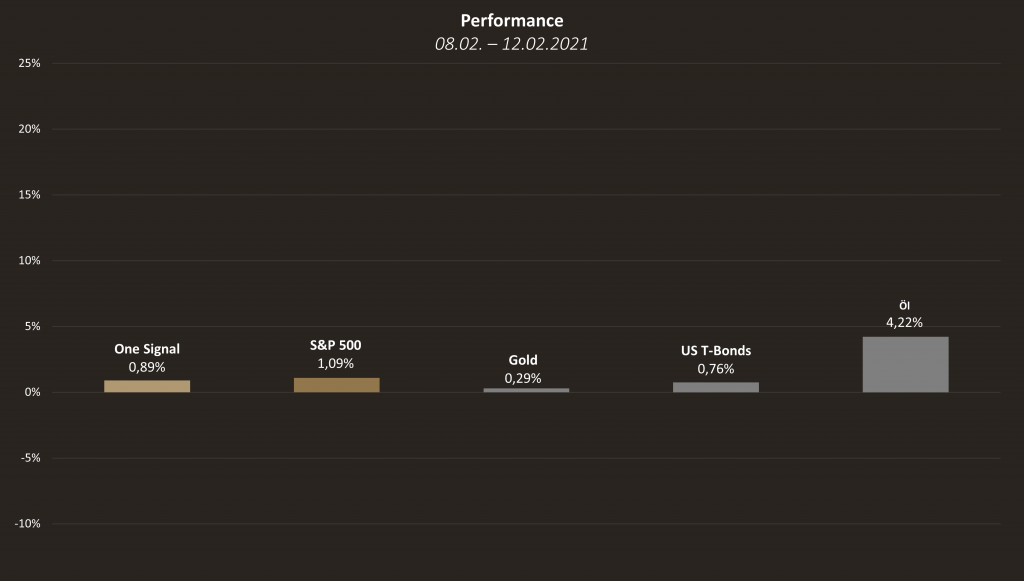After the U.S. Treasury Secretary Janet Yellen and the former head of the Fed spoke out over the weekend in favour of a rapid implementation of the government program, rising inflation became a topic again. Interest rates of the 30-year U.S. Treasury bonds rose above 2.00%. News of falling infection figures further brightened the situation and hopes of the economy’s return to the old path increased demand for oil, therefore increasing the prices as well. Yellen claimed that full employment could be reached in 2022 with some help, if not only after 2025.
The week was not particularly eventful from a fundamental point of view (economic and corporate figures, as well as FED and stimulus), yet the S&P500 reached a new all-time high three times. Taking this into account, the S&P500 climbed to 7 new highs this year.
Market observers want to see a bubble that would burst very soon. However, our observation shows rising enthusiasm that has not turned into euphoria or blind greed across the board yet. We traced this observation of all-time highs back to 1950 for the S&P500 and could identify (including 2021) 124 all-time highs in the first 29 trading days of the year. The subsequent periods (1day, 1week and 1-12months) were quite positive on average.
The chart of the week depicts something rather unusual, as all asset classes ended the week positively. The winner of the week is Oil, with +4.22%, driven by the hope that economic activity picks up again as well as restrictive OPEC policy driving up prices. The S&P500 closed the week up 1.09%. The lack of bad news and the abundance of money in the market are causing price increases. Gold was up 0.29% this week, driven by fears of inflation. US T-Bonds also ended the week in the green territory, up 0.76%. Smart traders beat the market again last week with a plus of 0.89%, as ONE SIGNAL delivered long signals all week except on Tuesday.
Those who expect spectacular gains from the stock market will fail spectacularly.
We wish everyone a great start to the week.
